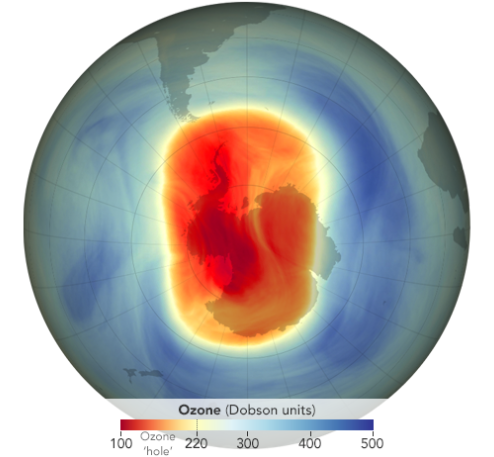
This map shows the size and shape of the ozone hole over the South Pole on September 21, 2023, the day of its maximum extent, as calculated by the NASA Ozone Watch team. Moderate ozone losses (orange) are visible amid widespread areas of more potent ozone losses (red).
NASA Earth Observatory
Topics: Antarctica, Atmospheric Science, NASA, Ozone Layer
Goddard Spaceflight Center: What is Ozone?
Editor’s note: This article has been updated to clarify the ranking of the 2023 ozone hole. It is the 12th largest single-day hole on record and the 16th largest when averaged from Sept 7 to Oct 13.
The 2023 Antarctic ozone hole reached its maximum size on Sept. 21, according to annual satellite and balloon-based measurements made by NASA and NOAA. At 10 million square miles, or 26 million square kilometers, the hole ranked as the 12th largest single-day ozone hole since 1979.
During the peak of the ozone depletion season from Sept. 7 to Oct. 13, the hole this year averaged 8.9 million square miles (23.1 million square kilometers), approximately the size of North America, making it the 16th largest over this period.
“It’s a very modest ozone hole,” said Paul Newman, leader of NASA’s ozone research team and chief scientist for Earth sciences at NASA’s Goddard Space Flight Center in Greenbelt, Maryland. “Declining levels of human-produced chlorine compounds, along with help from active Antarctic stratospheric weather, slightly improved ozone levels this year.”
2023 Ozone Hole Ranks 16th Largest, NASA and NOAA Researchers Find
